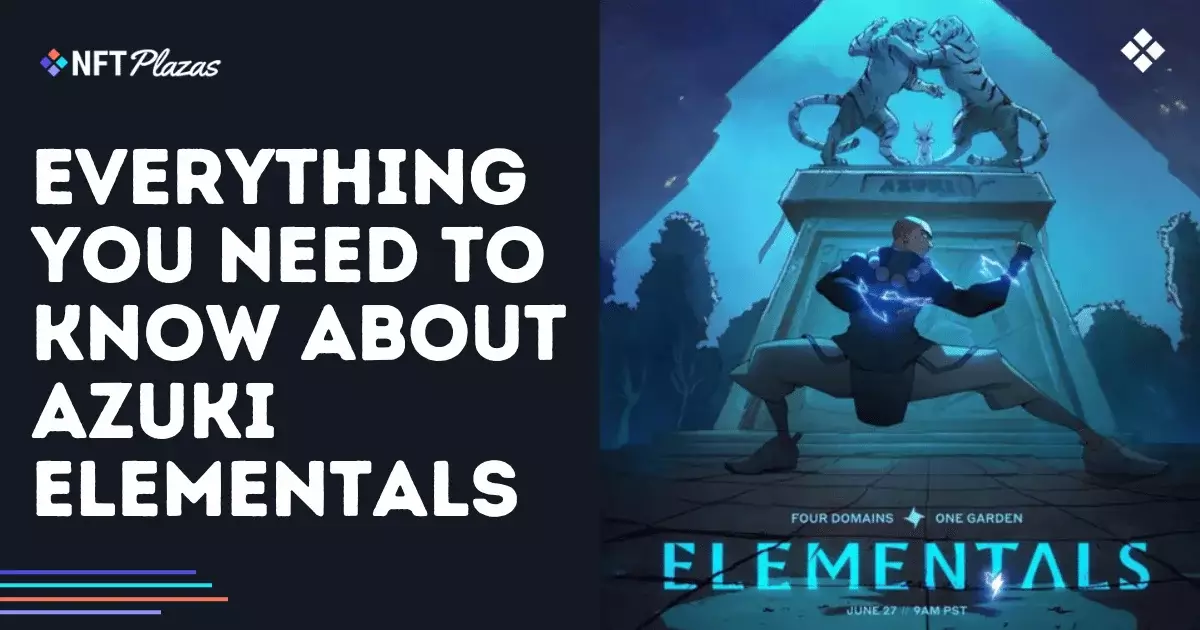The explosive entrance of Azuki Elementals into the NFT universe was met with a mixture of awe and skepticism. Born from the same visionary team behind the original Azuki collection, this 20,000-piece set promised to push the boundaries of digital collectibles by introducing elemental themes and expanding the Azuki lore. While the initial presale lit up social media and gathered impressive mints, a deeper analysis reveals a collection fraught with pitfalls—many of which threaten its long-term viability.
Despite the blazing sellout within a mere 15 minutes, it’s crucial to question whether this rapid demand truly reflects sustainable interest or simply a fleeting stampede triggered by FOMO. Market performance in subsequent months has been disappointing, with floor prices plummeting far below the mint cost, a stark indicator of overhyped expectations and thin liquidity. The NFT space’s notorious volatility suggests that enthusiasm around the Elementals might have been more speculative than genuine, a cycle seen time and again with multi-thousand NFT projects that begin with a bang but lose their footing quickly.
The foundational concern isn’t only market dynamics but also the intrinsic value proposition of the collection. Azuki’s strategy of rewarding early supporters within the broader ecosystem—by giving access to exclusive perks like The Garden, merchandise, and future drops—is commendable. Yet, these incentives seem insufficient when the artwork and thematic innovation are perceived as derivative or stale. The heavy reliance on existing Azuki fans for sales and community engagement risks creating a bubble of insular support, which may not translate into lasting cultural or financial influence.
Weaknesses in Artistic Innovation and Market Strategy
A glaring issue with Azuki Elementals is their artistic similarity to the original Azuki collection. While the elemental themes—fire, water, earth, lightning—offer a fresh angle, they lack the transformative impact needed to justify their existence as a standalone evolution. Many collectors expressed dissatisfaction, noting that the design feels more like a tweak rather than a revolutionary change. Artistic stagnation in such a fast-evolving space can be fatal; NFT projects survive on novelty, and without it, the appeal diminishes rapidly.
Furthermore, the project’s minting process exposed technical and strategic flaws. Operating under a tiered system that favored existing holders risked alienating new entrants, and the short presale window created accessibility issues. Ironically, the Dutch auction model, meant to stabilize prices and reward early supporters, failed to prevent a significant drop in secondary market value. The stark contrast between the initial hype and subsequent market performance underscores a common problem with NFT projects: hype-driven launches often fail to sustain long-term interest.
Perhaps most troubling is the project’s lack of clear, immediate benefits for owners. Although access to The Garden and exclusive merchandise present tangible perks, they seem disconnected from any real utility or interactivity at this stage. Without ongoing engagement or functional use cases, these NFTs risk becoming mere digital images with no compelling reason to hold or trade beyond superficial rarity rankings. The fear of value dilution looms large, especially when the collection’s size and thematic similarity dilute individual token uniqueness.
The Mirage of Community and Future Potential
Azuki’s community-driven model appears promising on paper, but the truth is more complex. While loyal supporters were prioritized in the minting phase, the community’s response post-launch has been lukewarm. Rumors of artwork updates and promised rewards remain unfunded promises in the minds of many critics who see them as band-aids over deeper structural flaws. The broader Azuki ecosystem, which once seemed innovative and vibrant, now grapples with declining floor prices across all its collections.
Looking forward, Azuki’s ambitious roadmap featuring AnimeChain, the launch of the $ANIME token, and plans for a trading card game offer hope. Yet, these initiatives also reveal a certain overreach—attempting to extend the brand into multiple dimensions without solid foundational utility. The integration with platforms like Anime.com, while promising, might turn out to be more as a marketing stunt than a genuine driver of value, especially if the core NFT offerings fail to evolve.
One must also question whether these future ventures will genuinely serve the community’s interests or are merely attempts to distract from current shortcomings. The trend of layering new projects and technological integrations risks diluting the original creator’s vision, leading to a fragmented ecosystem where the core NFTs lose significance. The central issue remains—without consistently innovative art and clear functional utility, projects like Azuki Elementals may quickly become relics of a bubble burst.
In sum, Azuki Elementals encapsulate the promising yet perilous nature of the NFT landscape. During their launch, they achieved extraordinary short-term success, but beneath the surface lies an unstable foundation built on hype and limited intrinsic value. For the savvy collector or investor, trusting in the long-term potential of such collections requires more than just eye-catching art and celebrity-driven marketing. It demands a compelling utility, continuous innovation, and a community that persists beyond short-lived excitement.
As the NFT bubble continues to deflate in some circles and expand in others, Azuki and its Elementals serve as a stark reminder: that true value in digital collectibles is rooted less in initial buzz and more in sustainable engagement, genuine utility, and creative evolution. Without these pillars, projects risk becoming victims of their own hype—a cautionary tale for anyone tempted to chase the next fleeting NFT gold rush.


Leave a Reply